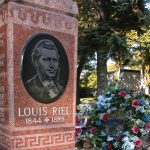By the last quarter of the nineteenth century piracy and slavery/the slave trade were almost extinguished, partly because governments were not inclined, as they had before, to ‘turn a blind eye’. The slave trade had been abolished in the British West Indies in 1834, and in North America in 1863. Both US warships and the British Navy were kept busy maintaining the Law. While the sixteen and seventeenth centuries had seen ‘gentleman adventurers’ running their own buccaneering ships backed by European kings and governments in the ‘licenced piracy’ industry, the ‘Jolly Roger’ was now frowned upon, especially by Britain and the United States, while superb Dutch, French and Spanish navigators based on the Venezuelan and Brazilian coasts and in the Caribbean were still loath to give up a highly profitable (though risky) business. In the South China Sea there has always been piracy, though half-crazy individuals like Brooke the White Rajah of Sarawak (q.v.) did much to suppress it.
Thus it was that in 1873 a fast, privately-owned ship illegally flying the United States flag was captured near Jamaica during the Cuban rebellion against Spanish rule (1868 – 78). The victors were Spanish, who were delighted to find the barque stuffed with arms. The captain of the Spanish gunboat had had the luck of finding a genuine gun-runner working for the USA.
The Virginius was taken to Santiago de Cuba where her crew was imprisoned. When the men were ‘interrogated’ it was discovered that the gun-runner’s captain was an American, Captain Fry, and that most of the fifty-two members of the crew were either British or American. The Court accused them of ‘filibustering’ (engaging in unauthorized warfare against a foreign state) and executed the lot.
Naturally the Americans (and the British Government) were furious, but diplomacy was used and a compromise reached, though the families of the fifty-three executed sailors remained incensed. Spain agreed to pay a compensation (to the Americans) totalling over $80,000 (a huge sum in those days). I cannot find out how much the British families were paid, but it is known that they received compensation too. Nor can I discover what happened to the Spanish captain of the gunboat. It was not his fault that the Santiago court exceeded its authority in ordering so many killings, but potential gun-runners and other illegal practitioners became noticeably more careful after the incident.











Super